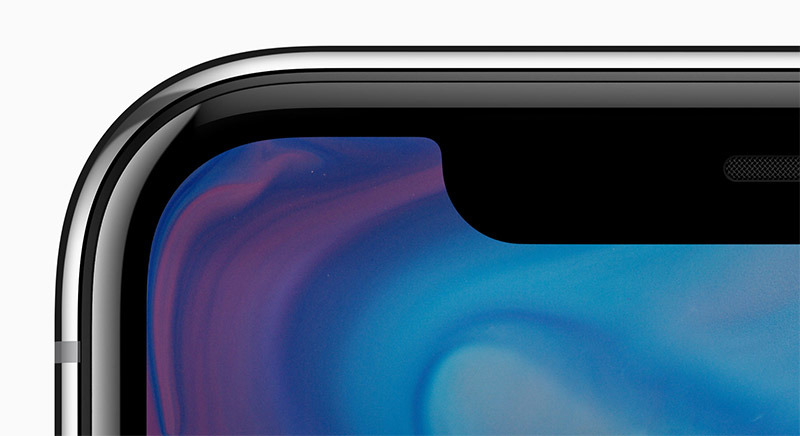Responding to media outlets and critics eager to report that iPhone X's tentpole Face ID feature failed during Tuesday's keynote presentation, Apple on Wednesday issued a statement saying the handset, and more importantly the biometric feature, worked as intended.
During Apple's iPhone X unveiling on Tuesday, executive Craig Federighi at the start of a live demonstration was forced to move to a backup model after a first unit seemingly failed to unlock as planned. Media glommed onto the story, in some cases touting the mishap as proof of Face ID's first — spectacular — failure.
Seen in the video below, Federighi picks up iPhone X and attempts to unlock it with Face ID, a process that requires the user to look at the TrueDepth camera and swipe up on the screen. When a first try fails, he puts the device to sleep and goes through the process again. That second attempt was also unsuccessful.
On iPhone's display a prompt showed up, saying, "Your passcode is required to enable Face ID." The alert sparked speculation that Face ID had failed.
In a statement to Yahoo's David Pogue, Apple maintains the demo iPhone X was functional and Face ID did its job. It seems the iPhone in question attempted to authenticate one or more employees tasked to set up the demo area prior to the big reveal. When it failed to recognize their face or faces, it defaulted to passcode, as per Apple's security protocol.
Tonight, I was able to contact Apple. After examining the logs of the demo iPhone X, they now know exactly what went down. Turns out my first theory in this story was wrong— but my first UPDATE theory above was correct: "People were handling the device for stage demo ahead of time," says a rep, "and didn't realize Face ID was trying to authenticate their face. After failing a number of times, because they weren't Craig, the iPhone did what it was designed to do, which was to require his passcode." In other words, "Face ID worked as it was designed to."
To protect against spoofing and hardware hacks, Apple's biometric systems are automatically disabled after a predetermined number of unsuccessful attempts. Touch ID, for example, gives users five attempts to authenticate with their finger before requiring a passcode. Apple documentation shows Face ID allows only two tries before being disabled.
How the second device made it onstage without attempting to authenticate random Apple employees is unknown.
Apple is known for its highly polished product demonstrations, having transformed the traditionally dry onstage presentations into a type of art form. Under late cofounder Steve Jobs, product unveilings evolved into hotly anticipated spectacle. Indeed, Jobs' own keynote presentations became known as "Jobsnotes."
Apple keynote presenters rehearse each scripted segment, prepare minute details and, as seen in Federighi's demo, plan for potential hiccups.
 Mikey Campbell
Mikey Campbell







-m.jpg)






 Brian Patterson
Brian Patterson
 Charles Martin
Charles Martin


 Malcolm Owen
Malcolm Owen
 William Gallagher
William Gallagher
 Christine McKee
Christine McKee
 Marko Zivkovic
Marko Zivkovic









82 Comments
Makes sense.
A meme has developed though.....
Well, as for the keynote presenters, I think Phil and Eddy should not return. They read from the TelePrompTer as if they’ve never seen the text before ... it’s been this way for a few Keynotes now. Phil in particular also looked bored when describing the iPhone 8 ... you could tell he just wanted to discuss the iPhone X. I’m not saying they are bad execs ... but neither convey enthusiasm. Clearly Craig, is the man for these events ... you can tell he lives and breathes Apple, and deeply understands what he’s talking about.
As for the Face ID fail ... that note on the screen was obvious at the time (I.e. PassCode required ..), I just assumed the phone had been rebooted (that’s when I usually see that message) ... in any case, people reporting it as a Fail are simply looking for something to criticise. The X is gorgeous! Will be pre-ordering as soon as my carrier lets me!
That thought crossed my mind too, but when an iPhone is rebooted it won't connect to Wi-Fi automatically and the iPhone X on stage was already connected to Wi-Fi.
The phone didn't crash (that would be the real fail) and a passcode was asked. Actually showing that the system is secure in case it might not work.
Naysayers have no clue of how complex the tech is to make FaceID work the way it does and it is brand new tech. It is an amazing feat that Apple is bringing it to the market, and it is not some laughable tech (e.g. Samsung's) that can be fooled by a printed version of your face...
PS: I am more concerned about the fact that an authority or criminal can simply open your phone showing the device to you.
With Touch ID they need to physically force you to put your finger. (or have the finger itself detached from your body).
I think FaceID is the current solution for taking away the TouchID sensor from the front, avoiding putting it to the back (which is an ergonomic nightmare).
The real secure version, will be TouchID integrated in the screen. Tech that clearly is not ready for prime time.
Which also might explain why the iPhone 8 has the same A11 chip as the X, although it is not required to do any FaceID stuff (not considering the extra hardware required to do so).
Which means that A11 has a much bigger role in the iPhone and future of Apple (a bit like introducing 64 bits a while ago) than FaceID itself, that we can foresee now (e.g. what will iOS12 bring to actually exploit A11 Neural engine, other than FaceID and pic taking features...).